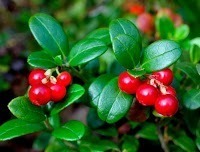Scientific adviser
Ph.D in Biology, Center for Creative Development and Humanitarian Education




Plant phenology
What is phenology?
The word phenology is derived from the Greek φαίνω (phainō), "to show, make to appear” and λόγος (logos), “study”
In other words, “phenology” is the science of what appears. In biology "phenology" refers to a branch of science that studies periodic events in biological life cycles and how these are influenced by seasonal and interannual variations in climate and habitat factors. R. Reaumur, who in 1735 established the dependence of the plants seasonal development on various meteorological factors, is considered as the founder of Phenology. In 1748, K. Linnaeus proposed the setting up of phenological observation stations network.
In the middle of the 18th century, with the beginning of the development of botany, the foundation was laid for scientific phenological observations.
The term “phenology” was introduced into the scientific literature in 1853 by C. Morran, Belgian botanist.
In Russia, A.Bolotov for 50 years (mid-18th - 19th centuries) carried out meteorological observations recording simultaneously separate phases in the development of trees and other plants. Phenological observations were also carried out by K.F. Rulye, N.A. Severtsov, D.N. Kaigorodov, G.I. Tanfiliev and others. During phenological observations the onset of seasonal phases (phenophases) of plants development are recorded: buds swelling and opening, the beginning and end of flowering, fruit ripening etc.
In 1848, the Russian Geographical Society published its program for observing seasonal natural phenomena.
In 1854, the society published the world's first geographical summary of phenological observations: information from 120 correspondents for the year 1851.
The voluntary phenological network of the Russian Geographical Society has been operating up to the present.
Russian reserves implement the Chronicle of Nature program, which is based, among other things, on phenological observations. These observations are the main sources of phenological data at the present time. Annual observational data are presented in the form of phenological spectra; the average long-term dates of the various phenophases onset in the area are included in the Calendar of Nature in the form of reference tables and diagrams.
Participating in this project you will:
· learn the methods of phenological research;
· Determine the main phenological phases and stages of plant development;
· You will be able to make a summer calendar of the nature of your area;
· Learn how to work in the team and interact with other project participants;
· Contribute to the compilation of the Chronicle of the nature of Yakutia.
You will learn to:
- do your research according to a given algorithm;
- observe phenological changes in plants;
- determine phenophases;
- make phenospectra of individual plant species;
- analyze and summarize the results obtained.
Phenology in my region:
Plants
Botanical research:
Zoological research:

Research theme to choose
Phenology of individual species of trees and shrubs in my area |
|
Phenology of medicinal plant species in my area |
|
Meadowplants phenological features (in selected plants of the area...) |
|
Forestplants phenological features |
|
Phenology of birch |
|
Phenology of bird cherry |
|
Allergenic plants phenology |
|
Plants phenological observations in my garden, summer house area |
Бейдеман И.Н. Изучение фенологии растений.//Полевая геобтаника. М., Л. 1960. Т.2.,с.333-366
Елагин И.Н. Сезонная жизнь лесов. М., 1976
Инструкция для проведения фенологических наблюдений по унифицированным зональным программам. Материалы фенологического центра БИН РАН
Стрижев А.Н. 'Календарь русской природы' - Москва: 'Московский рабочий', 1973 - с.272
Филонов К.П.,Нухимовская Ю.Д // Летопись природы в заповедниках СССР. М.: Наука, 1990. – 143с.
Общие таблицы для всех фитофенологов:
2. Даты наступления летних фенологический явлений в мире растений
3. Таблица продвижения по «маршруту» исследований












